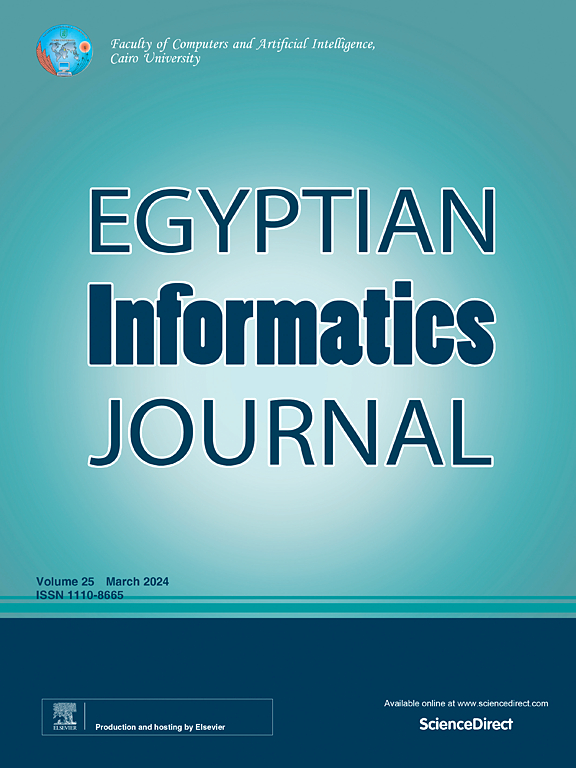A robust deep learning pipeline for multi-class cervical cancer cell identification
IF 4.3
3区 计算机科学
Q1 COMPUTER SCIENCE, ARTIFICIAL INTELLIGENCE
引用次数: 0
Abstract
Cervical cancer remains a significant global health concern, necessitating accurate and early diagnostic tools. This paper presents a robust deep learning pipeline for the multi-class classification of cervical cancer cells, introducing an optimized YOLO-based architecture enhanced with a novel Attention-Guided Multi-Scale Feature Fusion (AGMS-FF) module. We conduct a comprehensive evaluation, comparing our Full AGMS-FF model against its Baseline YOLOv11 counterpart and established convolutional neural networks including EfficientNet-B0, MobileNetV3, and ResNet18. Experiments were rigorously conducted on two distinct cervical cell datasets to assess model robustness and generalization. On Dataset 1 (9,500 images), the Full AGMS-FF model achieved the highest accuracy of 0.9256 and an exceptional Macro AUC of 0.9910, outperforming EfficientNet-B0 (0.8330 accuracy), MobileNetV3 (0.8028), and ResNet18 (0.7324). The Baseline YOLOv11 also demonstrated strong performance (0.9235 accuracy, 0.9910 Macro AUC). On the more challenging Dataset 2 (4,966 images), the Full AGMS-FF model again led with an accuracy of 0.8471 and a Macro AUC of 0.9791, with Baseline YOLOv11 at 0.8310 accuracy and 0.9774 Macro AUC. Both YOLO-based models consistently demonstrated remarkable performance across a wide spectrum of cervical cell classes, showing particularly high F1-scores for both benign and certain abnormal cell types. In contrast, other CNNs struggled notably with less frequent or more challenging pathological variations. Our findings highlight the profound capability of the enhanced YOLO architecture in achieving high-precision, multi-class classification across different data distributions, offering a promising avenue for clinical diagnostic support.
一个强大的深度学习管道用于多类别宫颈癌细胞识别
宫颈癌仍然是一个重大的全球健康问题,需要准确和早期的诊断工具。本文提出了一种用于宫颈癌细胞多类别分类的鲁棒深度学习管道,引入了一种优化的基于yolo的架构,并增强了一种新的注意力引导多尺度特征融合(AGMS-FF)模块。我们进行了全面的评估,将我们的Full AGMS-FF模型与Baseline YOLOv11模型进行了比较,并建立了包括EfficientNet-B0、MobileNetV3和ResNet18在内的卷积神经网络。在两个不同的宫颈细胞数据集上进行了严格的实验,以评估模型的稳健性和泛化性。在数据集1(9500张图像)上,Full AGMS-FF模型达到了0.9256的最高精度和0.9910的卓越宏观AUC,优于EfficientNet-B0(0.8330精度)、MobileNetV3(0.8028)和ResNet18(0.7324)。基线YOLOv11也表现出强劲的性能(0.9235精度,0.9910宏观AUC)。在更具挑战性的数据集2(4,966张图像)上,Full AGMS-FF模型再次以0.8471的精度和0.9791的宏观AUC领先,基线YOLOv11的精度为0.8310,宏观AUC为0.9774。两种基于yolo的模型均在广泛的宫颈细胞类别中表现出卓越的性能,在良性和某些异常细胞类型中均显示出特别高的f1分数。相比之下,其他cnn在不太频繁或更具挑战性的病理变异方面明显挣扎。我们的研究结果突出了增强的YOLO架构在实现不同数据分布的高精度、多类分类方面的深刻能力,为临床诊断支持提供了一条有前途的途径。
本文章由计算机程序翻译,如有差异,请以英文原文为准。
求助全文
约1分钟内获得全文
求助全文
来源期刊

Egyptian Informatics Journal
Decision Sciences-Management Science and Operations Research
CiteScore
11.10
自引率
1.90%
发文量
59
审稿时长
110 days
期刊介绍:
The Egyptian Informatics Journal is published by the Faculty of Computers and Artificial Intelligence, Cairo University. This Journal provides a forum for the state-of-the-art research and development in the fields of computing, including computer sciences, information technologies, information systems, operations research and decision support. Innovative and not-previously-published work in subjects covered by the Journal is encouraged to be submitted, whether from academic, research or commercial sources.
 求助内容:
求助内容: 应助结果提醒方式:
应助结果提醒方式:


